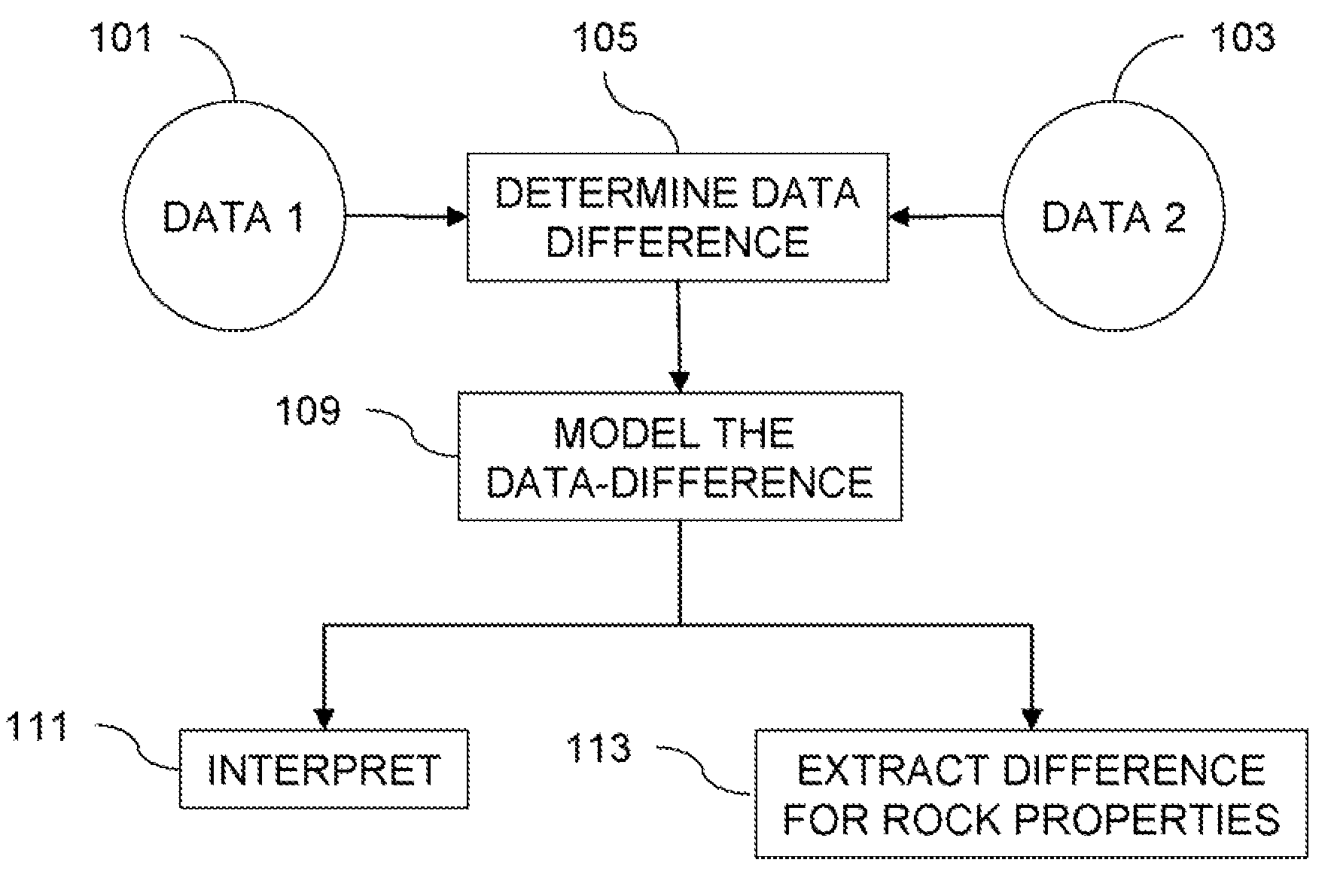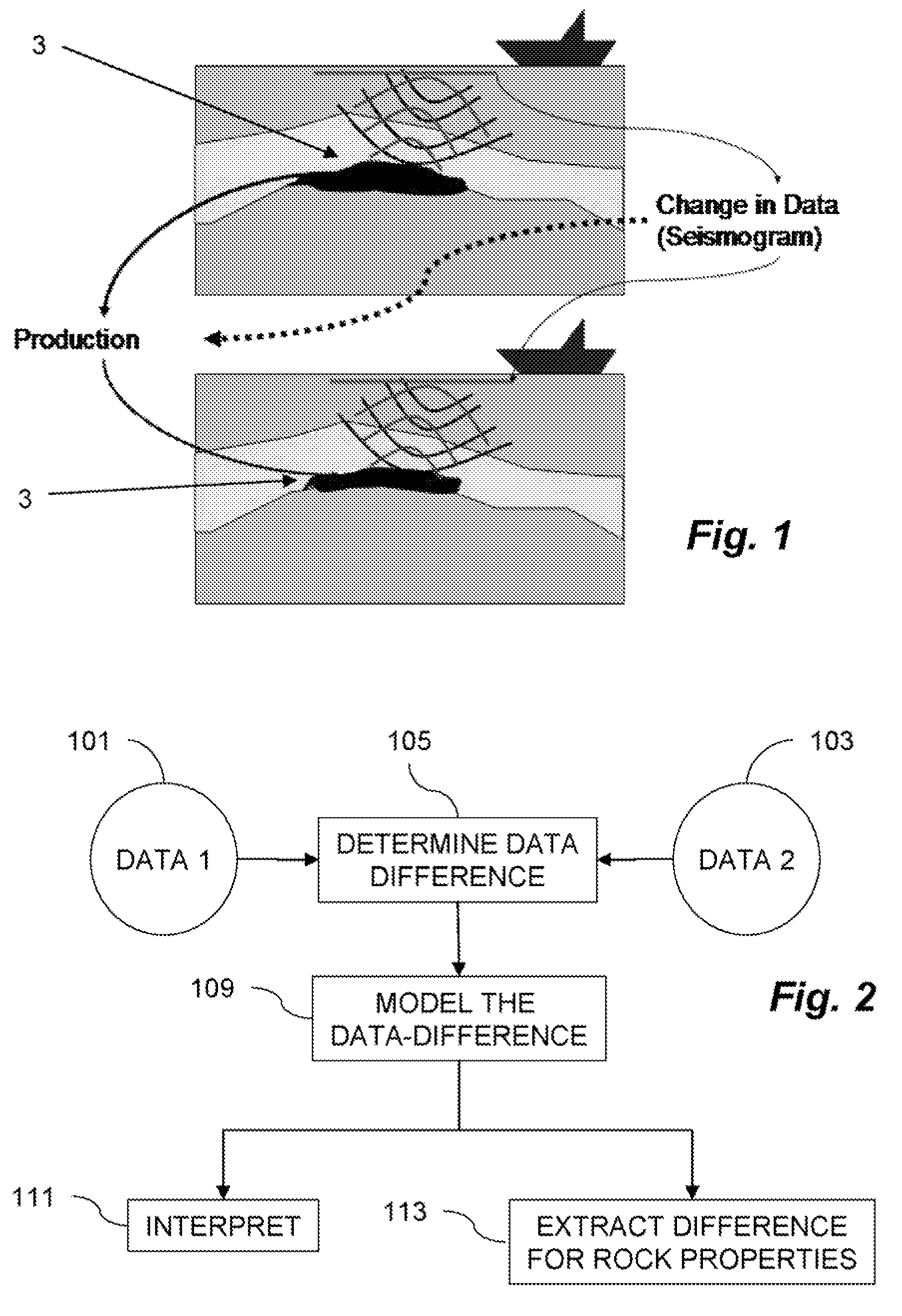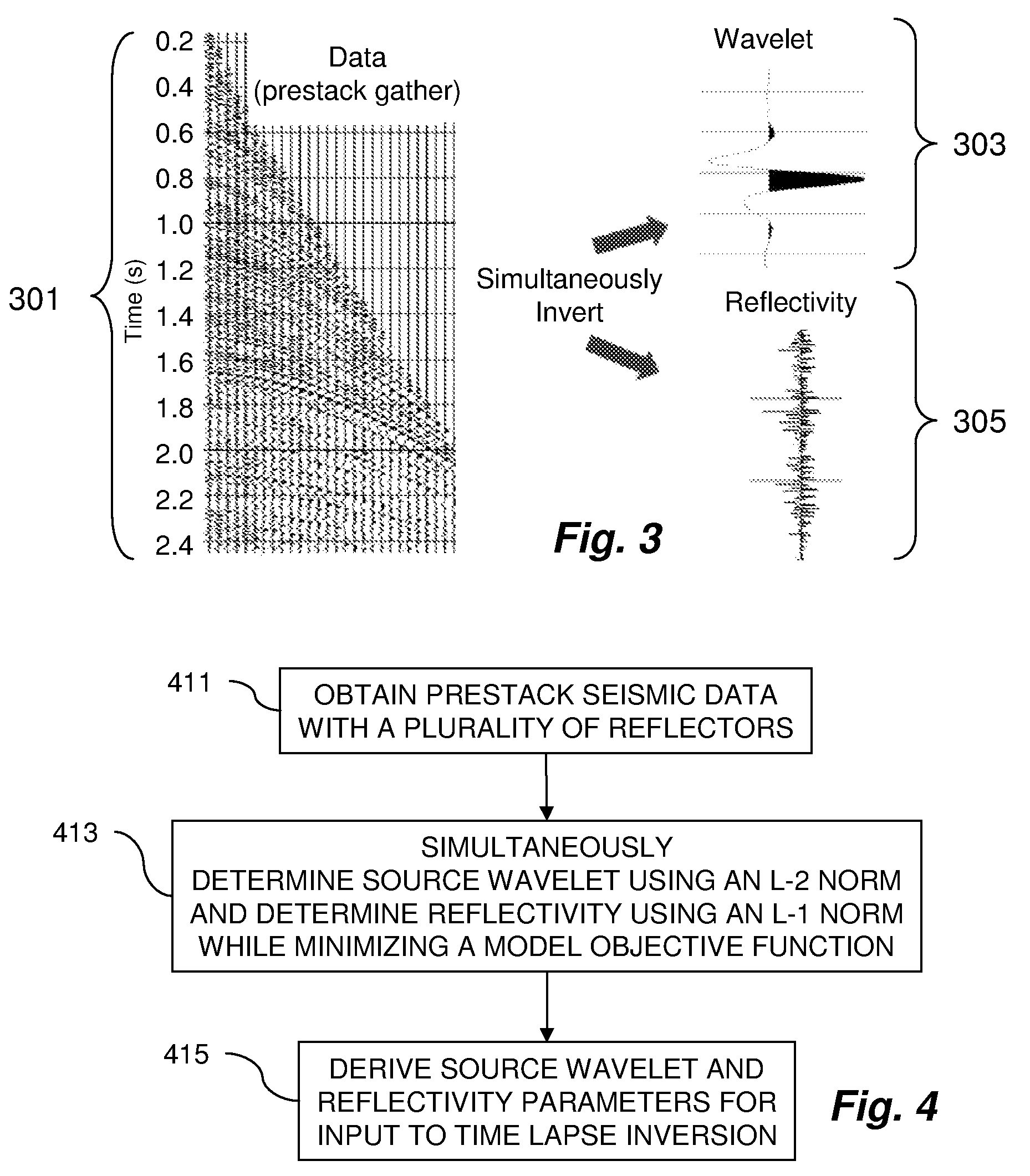Direct time lapse inversion of seismic data
a time-lapse inversion and seismic data technology, applied in the field of methods and processing, can solve the problems of reducing the value of time-lapse data, data sets that are incompatible, and analysis suffers from several limitations
- Summary
- Abstract
- Description
- Claims
- Application Information
AI Technical Summary
Benefits of technology
Problems solved by technology
Method used
Image
Examples
Embodiment Construction
[0042]A non-limiting illustrative embodiment of a time lapse inversion for determining subsurface reservoir changes is presented through one or more of its various aspects such as those noted below. Particular non-limiting embodiments related to direct time lapse inversion and model-difference time lapse inversion are described.
[0043]Embodiments disclosed herein and equivalents that will be apparent to practitioners in the art provide for robustly estimating changes in seismic properties associated with movement of fluids through subsurface reservoirs. Oil, gas, and water flow through reservoirs as these fluids are produced from or injected into the subsurface. Subsequent changes in fluid saturation and pressure likewise produce changes in seismic properties. Collocated time-lapse seismic surveys are recorded to image these changes in saturation and pressure, indicated indirectly through changes in seismic properties. Methods and systems as described herein improve imaging of the lo...
PUM
 Login to View More
Login to View More Abstract
Description
Claims
Application Information
 Login to View More
Login to View More - R&D
- Intellectual Property
- Life Sciences
- Materials
- Tech Scout
- Unparalleled Data Quality
- Higher Quality Content
- 60% Fewer Hallucinations
Browse by: Latest US Patents, China's latest patents, Technical Efficacy Thesaurus, Application Domain, Technology Topic, Popular Technical Reports.
© 2025 PatSnap. All rights reserved.Legal|Privacy policy|Modern Slavery Act Transparency Statement|Sitemap|About US| Contact US: help@patsnap.com



